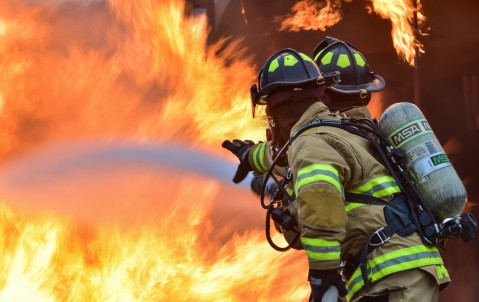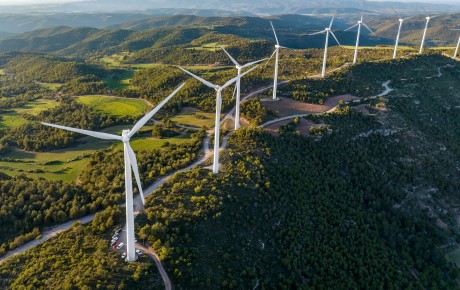Read the rest of the post ' Managing the reinsurance cycle '

Reinsurance market feels the heat from wildfire
Hiscox Re’s Ross Nottingham – Chair of North America, and John Casey – Senior Claims Underwriter, on why the last two years of US wildfire losses demands a recalibration of the risk.
After two of the most devastating years in history, the human and economic cost of wildfire in California continues to grow. November 2018’s Camp Fire alone is believed to have taken 86 lives, damaged over 18,000 buildings [1] – completely destroying the town of Paradise – while inflicting an economic cost of US$16.5 billion [2]. California’s Insurance Commissioner reported in early 2019 that insured losses from 2018’s November wildfires had climbed to US$11.4 billion [3], while over 13,000 insured homes and businesses from an overall claim count of 46,000 were reported to have been a total loss. Only 12 months earlier, the commissioner filed a remarkably similar report for 2017’s wildfire season, with a total of 45,000 insurance claims costing more than US$11.79 billion [4].
As climate change leads to greater variation between temperature and rainfall during the summers and winters in California, causing heavy vegetation, and strong, warm winds, wildfire losses are challenging the (re)insurance industry to reassess how it manages the peril. For reinsurers, it means asking a number of difficult questions for a peril that, prior to 2017, had produced relatively modest losses: has the soft market driven reinsurers to introduce too much ambiguity – widening the scope of available collections for cedants to the point where losses have become unsustainable? Is there a disconnect between the triggers for retro cover versus first tier reinsurance? What about the opaque treatment of mudslides following wildfires?
Coming up with the right answers will be critical if the predictions of more frequent wildfire events in the future are proven right and the reinsurance industry is to continue to deliver a sustainable product.
Loose definitions
One of the most pressing issues for reinsurers is how to tackle contract wordings that have become too loose and vague. Most catastrophe excess of loss contracts for perils such as earthquakes or hurricanes respond to the aggregation of losses arising from ‘one event’, with a unity of time, location and cause. Cedants will present their losses and show they occur within the event and period restrictions set out in the hours clause. Wildfire however often has multiple sources of causation so it is common for hours clauses to forego the cause requirement and stipulate a radius and time limit. In the soft market cycle, wordings have widened with radiuses expanded and hours clauses lengthened, leading to greater losses for reinsurers, with cedants able to choose how to maximise their claims; where to draw the radius; and whether to name the loss as one event or two. This level of ambiguity is unsustainable and the news that the Lloyd’s Market Association is working to develop a better wildfire loss definition is to be welcomed. Fixing the centre point from where the radius is measured within the fire seems obvious, but has been overlooked in the past leading to more post loss choice and ambiguity.
Fixing the centre point from where the radius is measured within the fire seems obvious, but has been overlooked in the past leading to more post loss choice and ambiguity.
Retro disconnect
Another concern for reinsurers is the disconnect when it comes to retro coverage. Retrocessional reinsurance for wildfire, unlike first tier excess of loss reinsurance, is event based with no loss occurrence limitations in terms of hours and radiuses. This works well for hurricanes and earthquakes because on the retro side, you cannot expect the reinsured to demonstrate all their involvements from a particular time or place. With a wildfire loss however, there is not necessarily the unity of cause and you can be left with a scenario where the event definition is actually narrower than the reinsurance being covered, which could create some issue for the retrocedent trying to make recoveries. On top of this disconnect, some retro capacity is no longer offering wildfire as a peril demonstrating the reticence of some ILS funds to back the peril having been hit two years on the bounce. Could this create a longer term capacity crunch for reinsurers?
Muddying the water
Mudslides also present another potential headache. The destruction of vegetation caused by wildfires, followed by the post-drought downpours, leads to mudslides although these can often take place some time after the original wildfire. This can lead to an unusual situation for catastrophe business where the proximate cause of the loss is months prior to the actual date of the damage. Again, this leads to a potential mismatch between wildfire ‘events’ as defined under different reinsurances. For insurers, Californian courts have said they will not allow them to use movement of earth exclusions to escape liability for mudslide losses where the proximate cause is wildfire. For reinsurers, how long should the contract be kept open to account for that loss? Cedants would undoubtedly like reinsurers to be drawn into that loss which is understandable but it must be priced appropriately and any ambiguity removed. It is of course an opportunity for reinsurers to take the initiative and look at innovative ways of helping cedants cover the risk and bring greater certainty.
Reinsurers deal in tail events, but if two 1 in 100-year events occur for two years running, there has to be a recalibration of wildfire risk.
Price discussion
How all these factors will affect insurers’ reinsurance programmes remains to be seen but it will undoubtedly be a price discussion and not just an uptick post loss. There needs to be a wholesale change in the view of wildfire risk and how this changing peril will affect programmes. Reinsurers deal in tail events, but if two 1 in 100-year events occur for two years running, there has to be a recalibration of wildfire risk. It’s a reinsurer’s job to establish if there are new inputs needed, to acknowledge these new data points and paint a picture of how the risk may look during the next policy period; whether it is already historically inaccurate mean data in the newly released vendor model, compounding wind speeds, or concentrations of housing in wildland urban interface.
Steep learning curve
Reinsurers have not got this peril right as the last two years have shown, but it’s a steep learning curve for all those involved in underwriting wildfire. It’s now the reinsurance market’s job to recognise the peril as a serial offender and work with the new science and data points available to get comfortable with its own view of risk while innovating to help cedants with their gaps in coverage.




